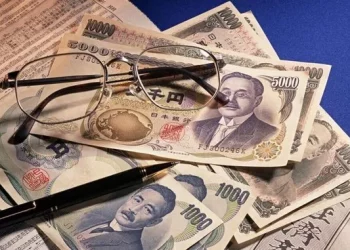In today’s interconnected world, currency exchange plays a vital role in both global trade and individual financial transactions. Foreign exchange markets are one of the most liquid and active markets in the world, where currencies are traded against each other. One of the most common conversions is between the Indian Rupee (INR) and the US Dollar (USD), two of the most traded currencies globally. In this article, we will explore the exchange process, factors influencing the conversion rate, and how to convert 100,000 Rupees to US Dollars.
Understanding the Foreign Exchange Market
The foreign exchange (forex or FX) market is the global marketplace for exchanging national currencies against one another. It is the largest and most liquid financial market in the world, with a daily trading volume exceeding $6 trillion. Unlike traditional stock markets, which operate on exchanges with fixed hours, the forex market operates 24 hours a day, five days a week. Currency values fluctuate constantly based on various factors, and this dynamic environment offers opportunities for traders to profit from these fluctuations.
The most widely traded currency pairs in the forex market are known as “majors,” and the USD/INR (US Dollar/Indian Rupee) pair is one of the prominent ones in the Asian market. The value of the Indian Rupee against the US Dollar is influenced by several factors, such as global economic trends, trade balances, and geopolitical events. As an Indian investor or someone looking to exchange INR for USD, it’s essential to understand the factors that impact this conversion.
The Basics of Currency Exchange Rates
A currency exchange rate is the price of one currency in terms of another. For example, if the USD/INR exchange rate is 75.00, it means that one US Dollar is equivalent to 75 Indian Rupees. This exchange rate fluctuates constantly due to several reasons such as:
- Interest Rates: Central banks, such as the Reserve Bank of India (RBI) or the Federal Reserve in the US, set interest rates that influence the value of their respective currencies. Higher interest rates in a country generally lead to an appreciation of its currency because it attracts foreign capital seeking higher returns.
- Inflation Rates: A country with lower inflation rates relative to other countries typically sees its currency appreciate. This is because low inflation helps preserve the purchasing power of a currency over time.
- Economic Indicators: Key economic data such as GDP growth, unemployment rates, and trade balances affect the value of a currency. Strong economic performance tends to boost investor confidence, increasing demand for that currency and driving its value higher.
- Political Stability and Economic Performance: Political stability and sound economic policies generally attract foreign investment. Countries with a history of stability and strong growth prospects often see their currencies strengthen.
- Global Events and Market Sentiment: Natural disasters, geopolitical events, and market sentiment can cause volatility in currency markets. For instance, during times of global uncertainty or a crisis, investors tend to flock to safe-haven currencies like the US Dollar, which increases demand and strengthens its value.
Factors Influencing the Conversion of 100,000 Rupees to Dollars
The process of converting 100,000 Rupees (INR) into US Dollars (USD) is straightforward but involves a dynamic exchange rate determined by market conditions. To understand how much 100,000 Rupees will yield in US Dollars, one must keep an eye on the current exchange rate between INR and USD.
The Conversion Process
To convert 100,000 INR to USD, you simply divide the amount in Rupees by the current exchange rate. Let’s consider an example where the exchange rate is 75.00 INR to 1 USD.
USD= INR/Exchange Rate=100,000/7 =1,333.33USD
In this case, 100,000 Rupees would be equivalent to 1,333.33 US Dollars at an exchange rate of 75.00 INR to 1 USD. The actual value of 100,000 INR in USD will fluctuate as the exchange rate changes.
It’s important to note that when exchanging money, financial institutions, such as banks or currency exchange services, may offer a rate slightly different from the market rate, factoring in a margin for service charges and profit.
Why Exchange Rates Fluctuate
The exchange rate between the Indian Rupee and the US Dollar can fluctuate due to several factors, which can have a significant impact on how much USD you receive for 100,000 INR. Understanding why exchange rates fluctuate helps in anticipating potential currency movements and deciding when to exchange money for the best possible rate.
- Inflationary Trends in India: Inflation in India influences the value of the Rupee. If inflation rates rise sharply in India while remaining stable in the US, the INR will likely depreciate against the USD, making 100,000 INR worth fewer US Dollars.
- Trade Deficits and Surpluses: India is a net importer, meaning it imports more goods and services than it exports. A trade deficit can result in a depreciation of the Rupee because foreign currencies are required to pay for imports. A higher demand for foreign currencies can weaken the INR against the USD.
- Monetary Policy and Interest Rates in India: The Reserve Bank of India (RBI) controls monetary policy, which includes managing inflation and setting interest rates. If the RBI raises interest rates, the INR may strengthen as investors flock to Indian assets, boosting demand for Rupees.
- Global Economic Trends: Global factors such as US economic growth, Federal Reserve policies, and global commodity prices like oil also impact the USD/INR exchange rate. The USD often strengthens when there is global economic uncertainty, as the dollar is considered a safe-haven asset.
Practical Scenarios for Converting 100,000 INR to USD
There are several reasons why individuals or businesses might need to convert Indian Rupees into US Dollars. Some of the most common scenarios include:
- Travel: When traveling to the United States, tourists often need to exchange their local currency (INR) for USD. Knowing the current exchange rate can help individuals budget for their trip and get the best value for their money.
- Investment: Investors in India may want to diversify their portfolios by purchasing foreign assets denominated in USD. In such cases, converting INR to USD is necessary for purchasing foreign stocks, bonds, or real estate.
- Remittances: Many Indian expatriates working abroad send money back home to their families. If these families need to send funds in the opposite direction, they must convert INR to USD.
- International Trade: Companies involved in international trade often need to convert currencies to settle transactions with foreign suppliers or customers. Understanding the forex market and the conversion process is critical for businesses engaged in global trade.
Strategies to Get the Best Exchange Rate for 100,000 INR
Currency exchange rates are volatile, and one might not always get the same value for their INR when converting to USD. There are several strategies you can employ to ensure you get the best exchange rate when converting large sums like 100,000 Rupees to US Dollars:
- Monitor Exchange Rates: Exchange rates fluctuate constantly, so it’s essential to monitor the rate over a period of time before exchanging a large sum. Tools like currency converters or forex trading apps can help track these changes.
- Avoid Currency Exchange Kiosks in Tourist Areas: Currency exchange services in airports or tourist areas often offer less favorable rates due to high service charges. It’s better to exchange money at a local bank or use an online currency exchange service for better rates.
- Consider Using a Forex Card: A forex card allows you to load foreign currencies at a fixed exchange rate, which can help avoid the risk of fluctuations. Using a forex card for travel or business transactions is often more convenient and cost-effective.
- Timing the Exchange: Timing is essential when dealing with forex. If you anticipate that the USD/INR exchange rate will improve, it may be wise to wait before making the conversion. Conversely, if the rate is expected to weaken, it might be better to exchange sooner.
Conclusion
The conversion of 100,000 Rupees to US Dollars depends on the current exchange rate and various market factors. As a foreign exchange trader or investor, understanding these dynamics is crucial for making informed decisions about when to convert currencies, whether for travel, investment, or business purposes.
By keeping an eye on inflation trends, interest rates, political stability, and global economic conditions, you can better anticipate currency movements and ensure that you get the best value for your money when exchanging INR for USD. Additionally, by employing strategies like monitoring rates, using forex cards, and avoiding unfavorable exchange services, you can optimize the conversion process and minimize costs. Whether you’re an individual or a business, understanding the nuances of currency exchange can help you navigate the forex market with confidence.
Related Topics:


























